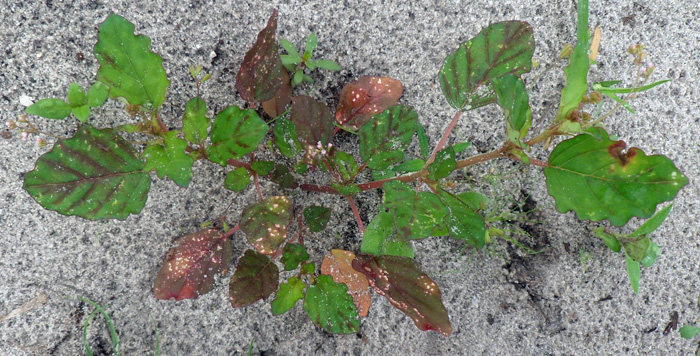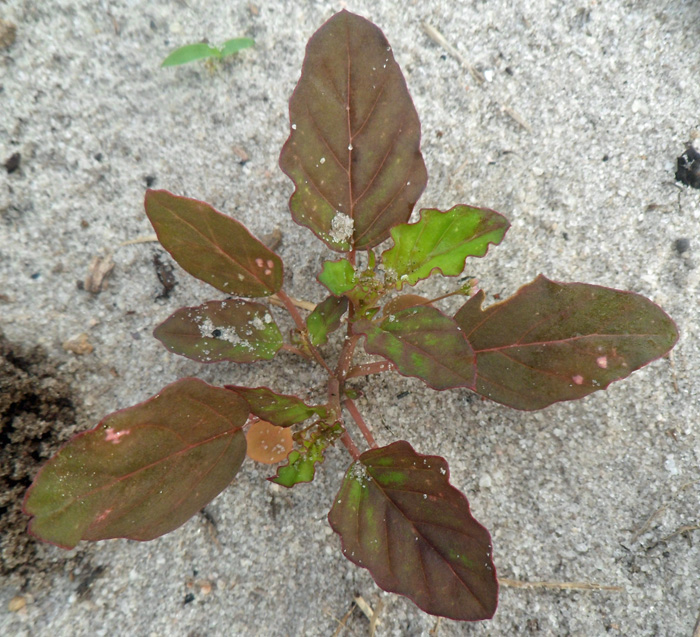Jay Ferrell, UF/IFAS Extension Weed Specialist
Spiderling (Boerhavia spp). is an annual/perennial that is becoming more prominent in north Florida. Once only observed on roadsides, spiderling is now becoming established in no-till peanut fields and perennial peanut hay fields.
Spiderling can be identified from a few unique characteristics. Seedling plants often show a deep red/purple color in the leaves (Image 2), but this converts to green as the plant matures (Image 1). Additionally, the leaves have deeply inset veins and this lasts for the life of the plant. Stems are often red toward the base, but become progressively green as you move upward (Image 3). Spiderling will grow fairly erect if other plants are near, but in open environments it is likely to sprawl with the stems lying flat on the ground. The seedhead is fairly open and produces seeds that are very sticky. I have observed these seeds to sticking to clothing, vehicle tires, or just about anything that passes by.
Spiderling is an annual in northern climates, but does perenniate in Florida. It has a fairly short, but thick taproot. Attempts to hand-pull this weed will commonly cause the taproot to break off and re-sprout. To control this pest, it must be dug from the ground or sprayed with an effective herbicide.
To date, little is known about herbicide efficacy on this weed. We know that imazapic (Cadre, Impose) is not effective, neither has 2,4-D shown successful results. Trials are currently underway to determine which herbicides will successfully control spiderling without adversely affecting the crop. Until these options are found, it is important to keep a watch for this weed, and not allow it to spread. If the infestation is currently low, I would recommend digging them out and watching for survivors.
- The How and Why of Preemergence Herbicide Incorporation for Row Crops - April 28, 2017
- Using Dicamba on Dicamba-Tolerant Crops - March 3, 2017
- Managing Dicamba Drift when using New Dicamba Resistant Cotton Varieties - January 27, 2017



